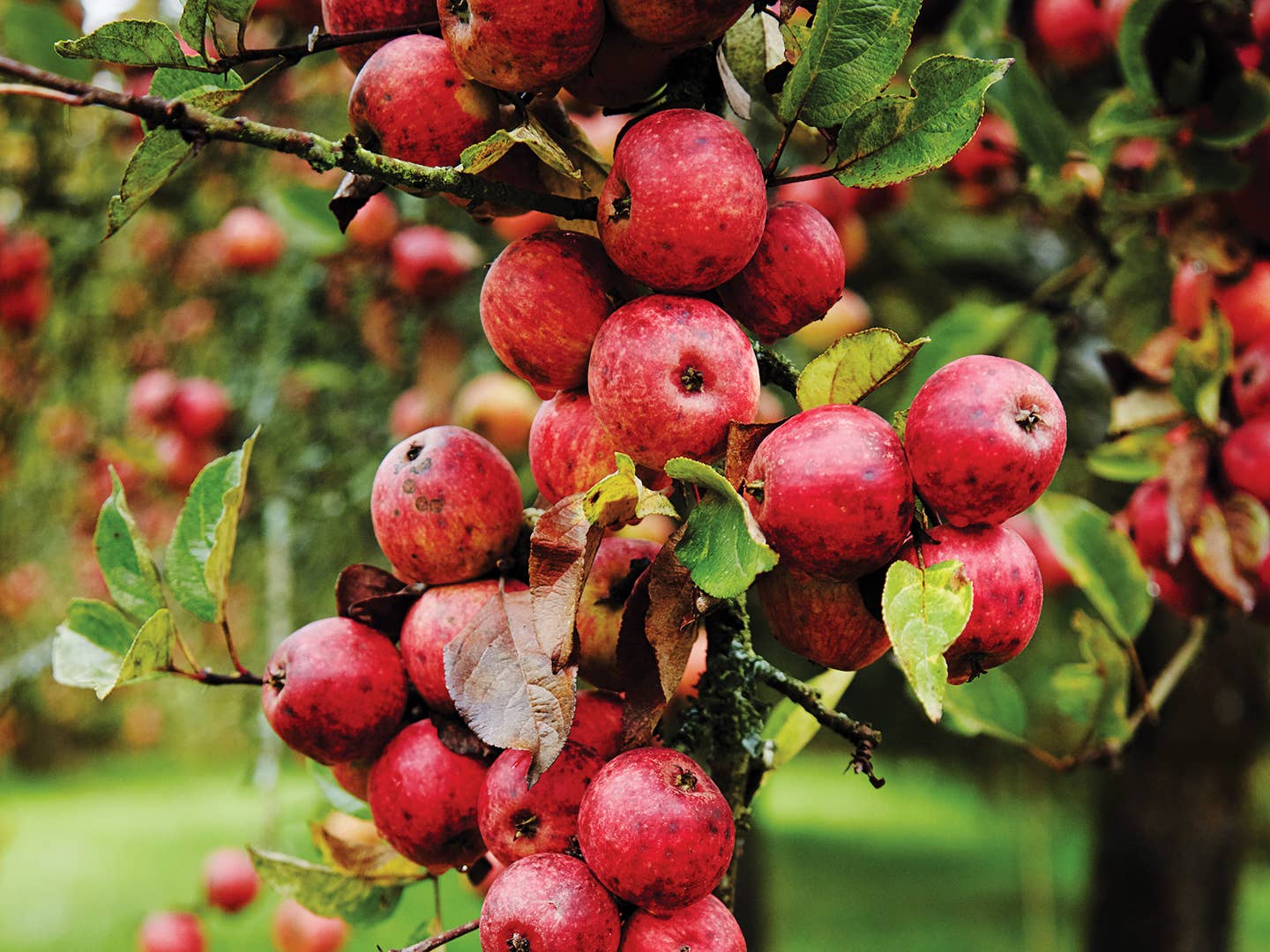
Apples and Calvados are the King and Queen of Normandy
One fruit reigns supreme in the north of France
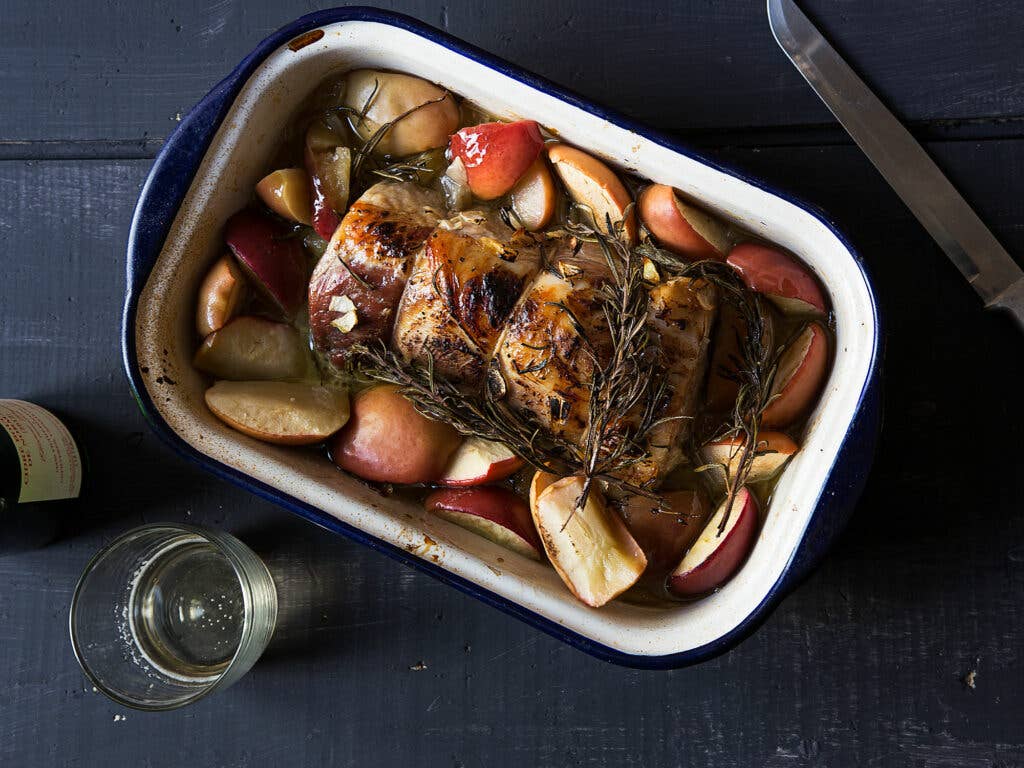
I used to love climbing the single crabapple tree across the street from my childhood home. Its pretty pink blossoms would erupt into perfume each summertime. By autumn, when the waxy, golden-green fruits would appear on its branches, I’d be in an almost delirious state of overexcitement, wild for these wild fruits. Then I’d taste them and they were…awful. Excruciatingly sour and bitter, mealier than uncooked potatoes. Certain that there must be a secret to figuring out how to enjoy them, I tried everything: waiting for them to mature on the branches; picking from the tree’s upper reaches; eating fallen fruit; trying to ripen them on the my bedside table. Nothing helped. They never mellowed.
Cut to an apple orchard in Normandy, many years later, beneath a tree covered in fruit just like the crab-apples of my youth. I pick one off the branch and take a bite; it's like sinking my teeth into a raw turnip. The flavor is intensely astringent. It's juiceless and tannic, almost pointillist, as individual flecks of pastel dust explode all over my taste buds. "Oui, a classic cider apple," Julien Frémont exclaims, smiling as I grimace my way through it.
Frémont, whose apples these are, is a young, soft-spoken cider maker whose family has been tending these trees in the Pays d'Auge since 1759. I've come here in search of resolution, to redeem that crabapple tree—to finally understand its true purpose. "To make the best hard cider," Frémont continues, "you need these bitter, tannic cider apples—apples that aren't pour croquer." Not for munching. "Every apple has its purpose: Some are for snacking on, others are for cooking, others for distilling."
The gnarled trees all around us are glowing with red and golden and green and orange and purple and nut-brown russet fruit. As we amble through the orchard, Frémont hands me a Transparente de Croncels—an heirloom varietal he considers perfect for eating out of hand. Its exterior is pale yellow, almost white hued, with a dreamy crimson blush on its sun-kissed side. The apple is soft skinned and mildly granular, its mellow, vinous sweetness shot through with hints of nutmeg, cloves, and myrrh. It tastes the way I imagine apples might have tasted in the three wise men's days. "It's a variété à couteau," Frémont explains: an apple you eat with a knife, for dessert, on its own.

As good as that apple is, it's those bitter cider apples that Frémont is really after. “These are the ones,” he continues, picking up a few other knobby orbs, “that taste incredible when you transform them into juice and spirits.” He leads me into his ramshackle old barn to show me what he's talking about. The half-timbered press house is about as rickety and cobwebbed as a structure can possibly be and still stand. Generation after generation of Frémonts have stored, juiced, and distilled their harvest right here.
As soon as I take my first sip of his Cidre Brut par Nature I realize that I've waited my whole life to find out what that crabapple from my childhood is really supposed to taste like. It's as good to the grown-up me as I wished those crabapples had been as a kid, with the complexity and elegance of a grower champagne, but with a rustic, cloudy undertow. Imagine a cult pét-nat crossed with a Belgian gueuze or any other on-trend sour beer, yet with a distinct, low-alcohol personality all its own. I also notice something else: His cider tastes emphatically like cheese—like one of those runny, mold-encrusted treasures of Gallic civilization, only in drinkable form.
When I ask Frémont whether that's possible, he nods. “You aren't the first person to make that comparison,” he says. “After all, this vegetal quality—which comes from the grass that feeds the cows that make the milk that turns into cheese—is also present in the apples. These trees grow in the same earth. The trees and the cows need each other, in a symbiotic way. They eat the weeds and fertilize the land—all naturally. And the native yeasts in the air must affect the cheese and ciders in similar ways as well.”
Frémont actually lives in the bucolic, meadow-filled heart of the Livarot, source of that namesake washed-rind, fiber-bound, raw-milk masterpiece. The designated production areas for Camembert, Pont-l'Évêque, Neufchâtel, and Pavé d'Auge are all near here as well. Frémont leads me back outside, pointing out the herd of lyre-horned Salers cows. They're munching away contentedly on grass and fallen apples, as they've always done. I'm a couple of hours west of Paris, though it feels like I've traveled back through time, not just to my crabapple tree of youth, but also into a real-life version of an old Impressionist painting.
It makes sense in a way: Normandy is the birthplace of 19th-century Impressionism. And places like Frémont's farm are still as old-fashioned and picturesque as they were in Renoir's days. This particular area is called Calvados, which is also the name of the brandy made from the region's famous apples. Even in France, industrialization has radically altered the way most agricultural goods are made, but some holdouts—like Frémont—still do things the way locals have always done them. By hand, traditionally, à l'ancienne.
To properly understand how his ciders are meant to be drunk, Frémont suggests pairing them with local cheeses. Not just any cheese will do, he cautions. Hundreds of millions of tons of cheese pour out of this region annually, but only a handful of producers still use milk from their very own cows. As we say good-bye to each other, Frémont meticulously writes down the names of some producers whose cheeses I should seek out in the region: Durand for Camembert; Spruytte for Pont-l'Évêque; and his neighbors, the Fromagerie de la Houssaye, for Livarot.
He steers me toward the nearby town of Vimoutiers, a drowsy, pretty village that qualifies as an urban center in these rural parts. I stock up on Frémont's suggestions at a small cheesemonger's shop and then pop into Au Chant du Pain bakery on rue du Docteur Dentu. The hearth here seems to have been around since the Middle Ages, and they sell slices of their immense yard-long loaves of walnut bread and chestnut-flour bread by weight.
These almost prehistorically flavorful and nut-packed breads turn out to be the ideal accompaniment to the cheeses and Frémont's cider I learn while enjoying an impromptu picnic overlooking the trickling Vie River, feeling very much like someone who's fallen into an Impressionist painting.
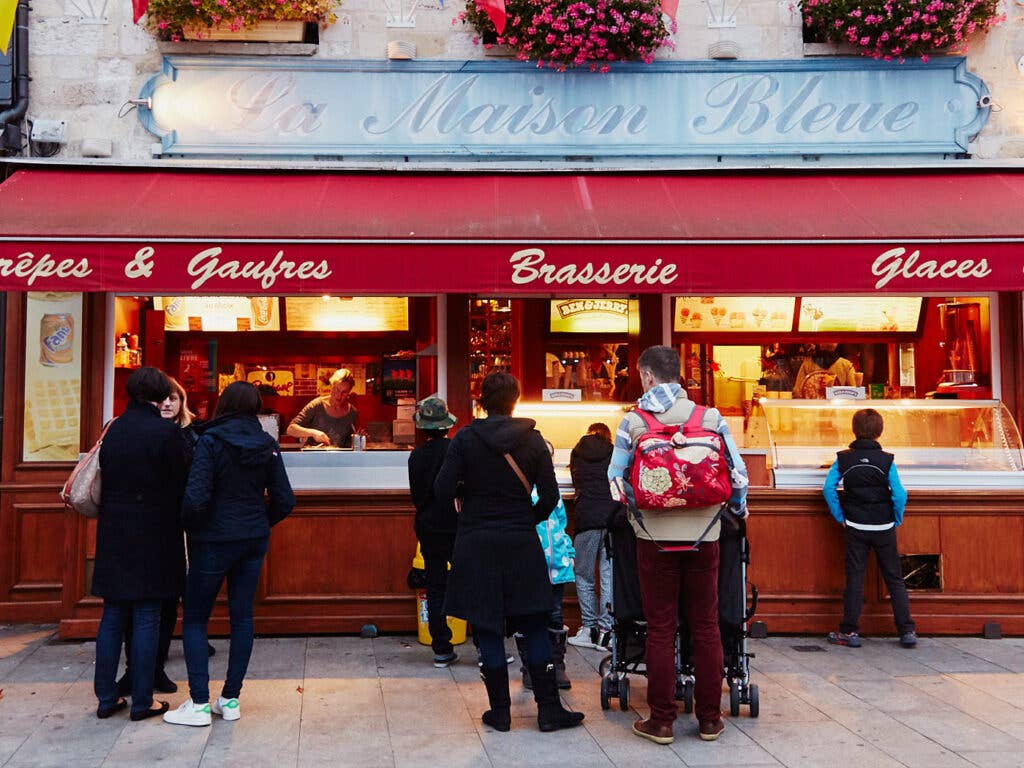
Driving north through Normandy's green and gold landscapes, I end up on the coast in the town of Honfleur, with its heart-stoppingly beautiful port. Old schooners are still docked here, and you can stop in for a glass of cider at many of the establishments lining the harbor. The main attraction here is the vibe: Honfleur and its outlying region was the primary setting for paintings by the likes of Monet, Courbet, Boudin, and many others. Those Impressionist masters didn't come to Honfleur randomly; they came for the light. It coats falling leaves in its golden-orange aura. When rain gusts in off the ocean, dimming rays make the raindrops glint in a brilliant, silvery way. And when the dampened sun bursts back, everything becomes almost blindingly bright and vibrant.
It's hard to look at the ocean around Honfleur and not want to be a painter. The clouds and waves resemble swirling brushstrokes, all blues and whites and pearlescent pinks. It's almost too much. Even the sound of the wind blowing softly through the trees is vividly heightened. Walking through the town before dinner, I wonder whether it's possible that Impressionism is more than merely a visual experience. Night-blooming flowers cast their fragrant spell over the evening air. A black cat appears like a figure out of a Toulouse-Lautrec painting and disappears into a hole in the wall. Orchards abound, and the boughs of fruit in the gloaming seem to be radiating vitality. Is Impressionism about succumbing to these sensations, dissolving into the mists of sensation?
That evening, I have dinner overlooking the apple trees at La Ferme Saint Siméon, a magnificent old inn that preserves Normandy's artistic past (the Impressionists stayed and painted there). In between courses, the sommelier suggests I partake in the local custom of a mid-meal glass of calvados, the esteemed local apple brandy. They call it a trou normand (Norman hole), as in the hole in your stomach that calvados purportedly creates that stimulates the appetite and allows you to keep forging your way through course after course of classic Norman cuisine. A newcomer soon detects a pattern in the sorts of dishes eaten in this part of France: mussels with apples, tripe with apples, partridge with apples, steak with apples, and so on. Everything is washed down with jugs of fresh cider. For dessert, they serve you bourdelots, whole apples baked in a pastry crust. This may be followed up by a sweet apple omelet. And then comes the requisite platter of local cheeses, each one more demoralizingly delicious than the last. Whether or not that calvados is actually creating any more space inside a person's digestive system is moot. You don't need to believe; you just do it. And eating food this heavy requires drinking something as pleasantly potent as calvados.
There are apparently 800 different varieties of apples grown in Normandy today, and if you weren't so busy marveling at the hillside castles overlooking the vast blue sea, you'd probably be able to identify many of them on the old coastal road, going southwest from Honfleur to Trouville-sur-Mer. The view is glorious, all fruit-dappled orchards and meadows and wild apple trees. As glimpses of the ocean stretching out toward the horizon flash by through the passenger-side window, you can imagine Courbet setting up his easel out there to paint the spray and the waves and the rocks. When a brief storm comes in, my car is enveloped in billowing sails of fog; it's like driving through a living canvas.
That afternoon, I meet up with Jean-François Guillouet-Huard, a seventh-generation calvados maker, at Domaine Michel Huard. He recently took over the business from his grandfather, Michel Huard. Like Frémont, Guillouet-Huard too has Salers cows in his orchards. “It's essential to have the cows tending the land if you want to make good calvados,” he explains. “It's always been this way. It's all interconnected.” His operation seems to me to be the platonic ideal of a farm: a preternaturally quiet and peaceful medley of animals, fruit trees, and rolling hills. “It's beautiful to see the cows in the orchard at sunrise,” he murmurs. “I love walking through the dewy grass at dawn. That's what I've always done. It still makes me happy.”
We head into his barrel rooms to try some back vintages of calvados, which taste like fine cognac, only made out of apples, not grapes. The younger vintages are quite bracing and raw—like drinking flames. As they age, their bite mellows, taking on cardamom overtones and earthy cave notes, as well as elusive herbal flavors. “To understand calvados, you have to spend a lot of time smelling it,” Guillouet-Huard explains. “It isn't easy to fully comprehend it. But it's that complexity that is at the heart of calvados. That's why it's good after dinner. You have to be in a state of calm.”
He cracks open a bottle of 1976—which happens to be both Guillouet-Huard's and my birth year. It's like staring into the soul of 100,000 apples. Its florality floors me; it's more like perfume than any drink I've known. In fact, the aroma reminds me of the blossoms on that tree across the street when I was a kid. Although it's nearly 40 years old, Guillouet-Huard thinks the calvados might still be too young. (I, of course, agree with this assessment, not caring whether he and I may be biased by the fact that we're the same vintage as that too-young calvados.) “It's not in the culture of our domaine to rush things,” he adds. “We believe that you have to be patient to make proper calvados. But we are out of step with this consumerist society where everything has to go really quickly.”
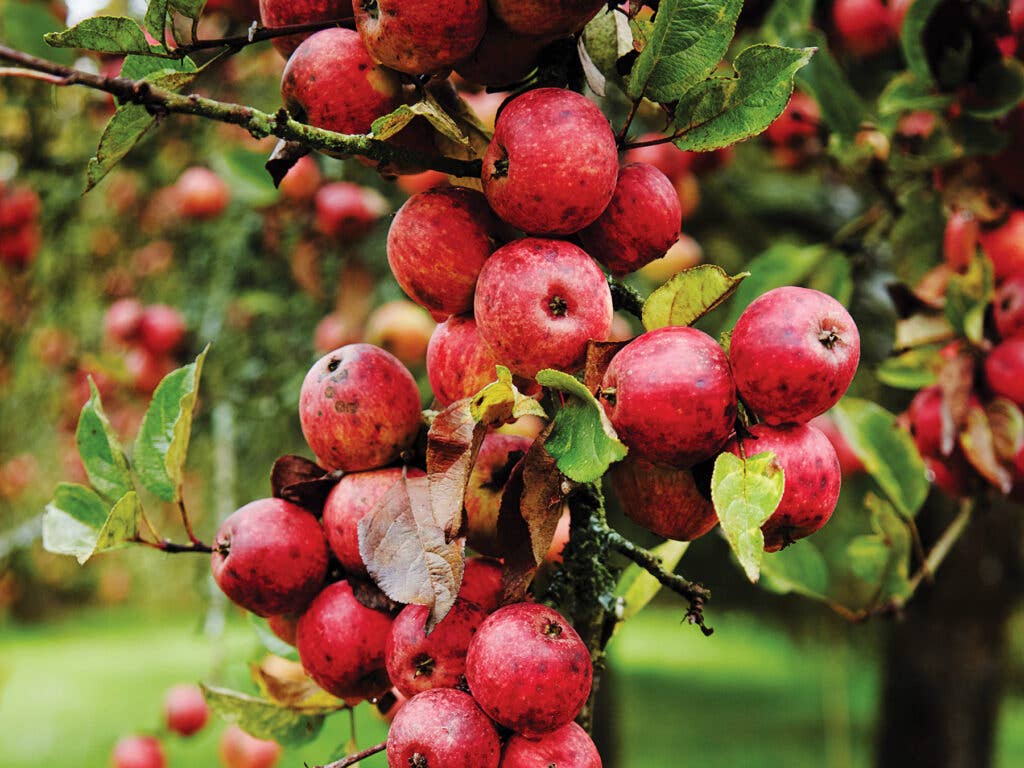
The best parts of Normandy are all out of step with the modern world. What else would you expect from a place where the cows that mow the lawn beneath the apple trees give milk that makes cheeses that taste ever-so-slightly like apples? You don't need to go down some magical rabbit hole of a trou normand to feel close to the cycles of nature here. This place is a simple place, a region intimately connected to the past. It's an Impressionist garden of earthly delights, and I hope to return again and again.
But for now, it's my final dinner in Normandy, and I'm meeting with the cider maker Eric Bordelet, formerly the sommelier at the Michelin-starred L'Arpège in Paris, a restaurant famous for using the finest, freshest vegetables possible, many of them grown on its own farms. When he worked there, he felt that certain dishes were better served by cider than by wine. When he couldn't find ciders made in the elegant farmhouse style he loved, he returned to the familial domaine, which had fallen into disrepair, and began making ciders his way. “I don't want to replace wine, I want to complement it,” he tells me, as we sit down to the table at Le Manoir du Lys, located inside a nature preserve in the Andaine Forest. “A good sommelier is someone who knows how to link food and wine, and cider is excellent at the dinner table—especially when you have it with the right dish.”
To illustrate, he pours us each a glass of his "sydre," a spelling borrowed from Old French, to go with a plate of just-picked, raw cèpes (porcini mushrooms) served with tomatoes from L'Arpège's farm and fleur de sel. The dish is sensational—but it is even better with a glass of Bordelet's cider, which tastes like apple pie topped with buttered popcorn and caramel sauce. It is outlandishly good—less funky than Frémont's, but deeply flavorful and satisfying. "When I think of cider, I think of our terroir," Bordelet says. "Our trees, our land. Cider is our wine: It's our culture, it's our history."
I tell him about the bitter, sour, small crabapples from my childhood. "Those sauvage apples are simply more expressive than domesticated apples," he answers, pouring us another glass. "And they make wonderful cider, don't they?"
Get the recipe for Honey-Glazed Roast Pork with Apples »
Get the recipe for Apple, Celeriac, and Carrot Salad »
Get the recipe for Caramelized Apple Omelet (Omelette Sucrée à la Normande) »
Get the recipe for Baked Apple Terrine with Calvados »
Normandy's Best Cider & Calvados Producers
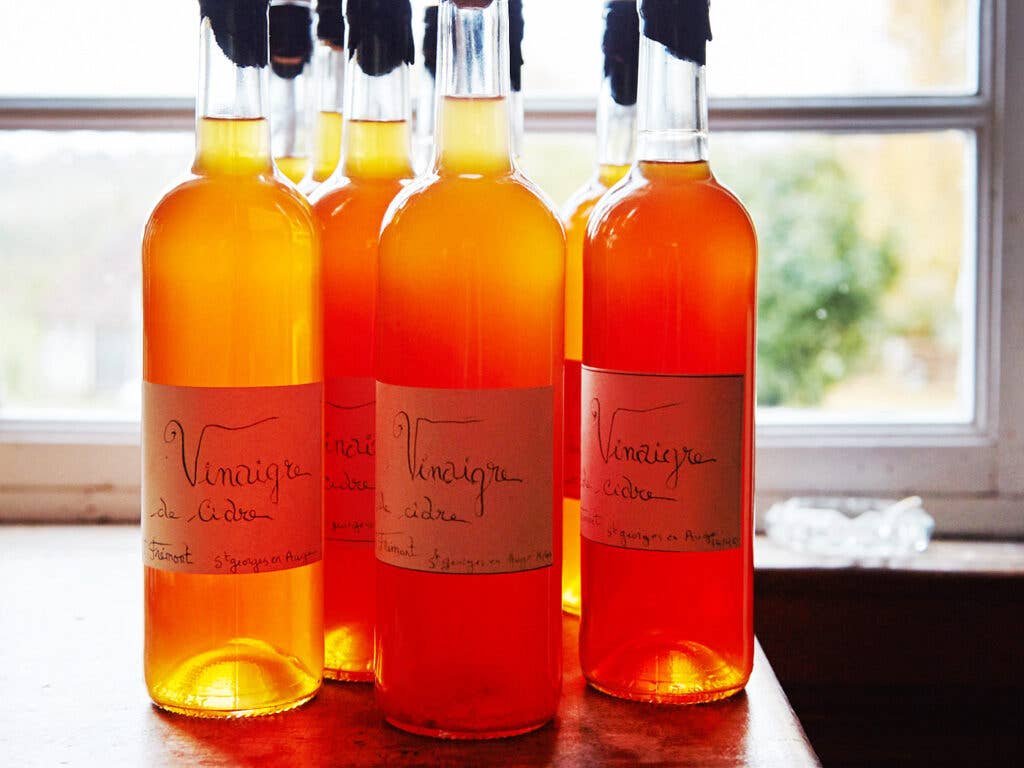
Eric Bordelet Bordelet makes crisp, pure, and perfectionist Normandy ciders (whether spelled "sidre" or "sydre," as per ancient local tradition) as delicious—and well-priced—as any you will ever try. beauneimports.com
Julien Frémont Whether it's Frémont's all-natural apple juice, his highly funky sparkling Cidre Brut par Nature, or his exceptional calvados, everything he makes with apples turns into drinkable gold. louisdressner.com
Huard Huard's vintage ciders and his entry-level Calvados Hors-d'Age are ideal introductions to Normandy's apple spirit. charlesnealselections.com
Lemorton The Lemorton family makes some of the finest calvados from the Domfrontais region. The appellation requires 30% of the cider to be made from pears. A number of its vintages from the 1980s—mellow, profound, rich—are available in stores. charlesnealselections.com
Cyril Zangs Zangs Brut Cider is the sort of super-natural, ultra-chic hipster cider favored by the likes of Le Chateaubriand in Paris and Wildair on the Lower East Side of New York City. selectionmassale.com
Keep Reading
Continue to Next Story










